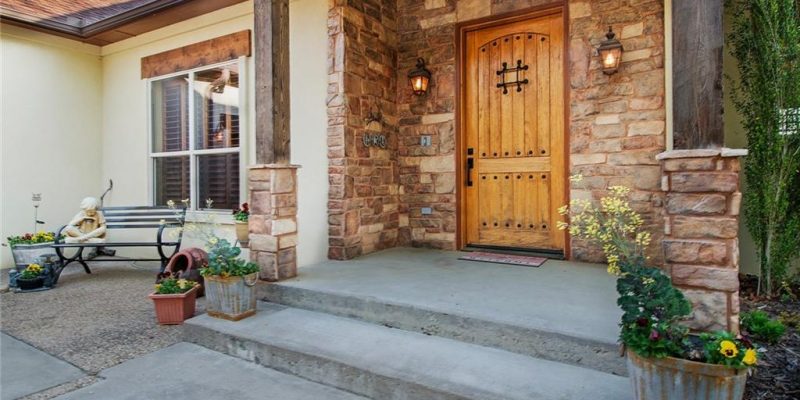Woo hoo! I have finally started the process of painting my kitchen cabinets. Here is an easy-to-follow step-by-step guide on how to prepare your cabinets for paint. Be warned. The first step is a doozy.
Step 1. Worry and fret over whether or not to paint your kitchen cabinets.
Estimated time: two or three years
For the amount of time I spent thinking about painting my kitchen cabinets, I could have painted my cabinets and the entire exterior of my house as well as every house on my block.
I could have watched every video on YouTube of dogs doing something super cute.
I could have learned Arabic.
Now that I have started the painting process, I regret that it took me so long to begin. The problem is that I’m a natural-born worrier.
Here were a few of my concerns:
What if I start the process of painting my cabinets, and I hate how they look?
What if I pick the wrong color?
What if I do a terrible job and my cabinets get ruined?
What if my older relatives think I’m an idiot for painting over “perfectly good wood”?
What if the hosts of HGTV shows suddenly change their minds about kitchen décor?
What if my cabinets immediately start chipping and look worse than before?
What if my family is not clean enough for white cabinets?
What if my kitchen looks too sterile because it has too much white?
I finally shared ALL my thoughts with my husband in one long, drawn-out tirade. His response? “It’s just some cabinets. If you don’t like how they look, you can just repaint them.”
Step 2: Ask every person you come in contact with his opinion on the best paint to use for kitchen cabinets.
 Estimated time: Two months
Estimated time: Two months
Once I decided to begin the process, I asked everyone about paint. I talked with my neighbors, my family, my doctor, my Facebook friends, and (of course) Siri.
After asking Siri, I watched videos and read blogs, from which I discovered that there seemed to be two schools of thought. Some recommended using chalk paint, and others suggested that I talk with experts at Sherwin Williams or Benjamin Moore.
The more I read about chalk paint, the less excited I was to use it. Some bloggers wrote about how chalk paint was great for giving cabinets that “distressed” look. I have never professed to be a home design expert, but I don’t think the shabby-chic look is fashionable anymore.
The other reason I was turned off by chalk paint is that I didn’t want to have to worry about sealing the paint. As soon as I read that not sealing chalk paint properly may result in streaks or bubbles, I decided I would seek the advice of experts at my go-to paint store: Sherwin Williams.
Step 3: Seek the advice of a grumpy, old guy (GOG).
Estimated time: 6 minutes
I went to my friendly neighborhood Sherwin Williams and talked with a nice, young, twenty-something. He wrinkled his brow when I mentioned painting cabinets and said, “I think we sell cabinet paint.”
This was confirmed when he came from the back room with a gallon of paint similar to what I had used to paint my front door the year before. I hated working with that paint. It was a runny mess, and even though I love Sherwin William’s other products, there was no way I wanted to use that same paint for my kitchen cabinets.
So, I took a deep breath, and after years of being a loyal SW customer, I entered a Benjamin Moore paint store. It was there I encountered a grouchy, old guy who was a paint expert. I learned more about painting in a six-minute conversation with him than I had with any other person I had conversed with recently.
A quick note about grouchy, old guys (or GOGs for short) who work at home improvement stores. Do not be afraid of these men, who for some reason all have crazy, scraggly eyebrows. They know their stuff. This GOG had painted every type of surface imaginable throughout his long life. Do not be put off by their gruff exteriors. Listen to them.
In that six-minute conversation, GOG walked me through the process. Here’s what he said.
Step 4: Clean your cabinets thoroughly with TSP.
Estimated time: 1 hour
TSP is a powdered substance that you mix with warm water. The directions are straight forward and on the back of the box. I used a kitchen dishrag to remove the goo and grease from all the surfaces I planned to paint.
Step 5: Lightly sand the surface of the cabinets with a sanding block.
Estimated time: 1 hour
During my fretting stage, I envisioned having to remove the existing varnish off my cabinets completely. I imagined a mess similar to sanding new drywall. I thought I would have to wear eye protection and a facemask, but, in fact, it wasn’t like that at all.
The GOG said to lightly sand the surface of the cabinets until they were less shiny. He also reminded me to be careful not to make scratches on the wood’s surface by pushing too hard on the sanding blocks.
Step 6: Wipe the surface with a tack cloth.
Estimated time: 10 minutes
I had never heard of tack cloth, but they are thin pieces of material that are slightly sticky. The tack cloth removed dust and hair from surfaces, so they were lint-free and ready to paint.
After literally spending years thinking and planning for this project, I spent two and one-half hours preparing the surfaces, and now I am ready to paint.
Look for future posts about choosing hardware and how to actually apply paint to the wood.




